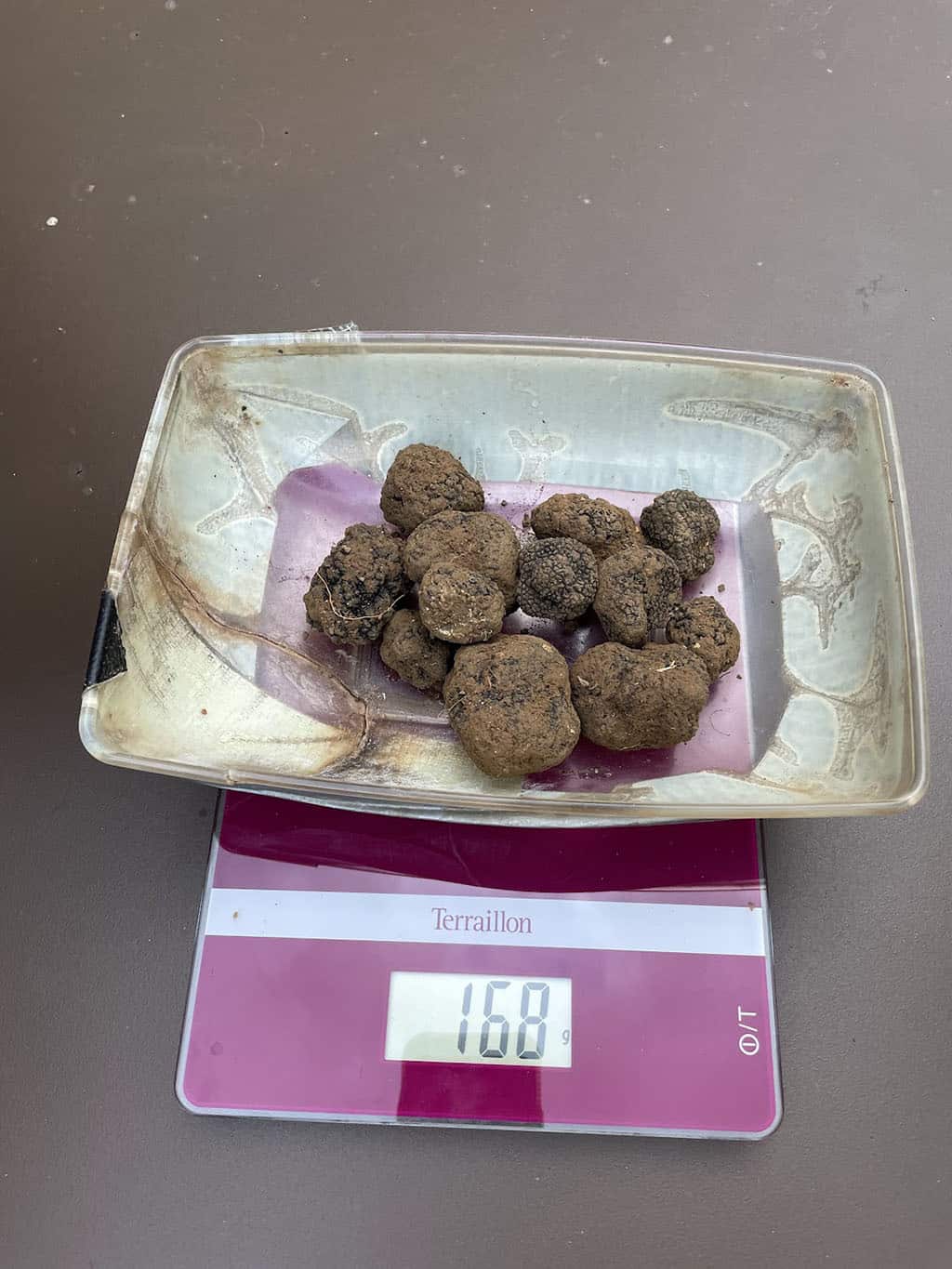It took 11 people, two dogs and two hours to come into possession of 168 grams of the Burgundy truffle. It might seem like too little, but it is actually quite a significant quantity of this unique and exclusive treasure.
Truffles play hard to get when it comes to the human senses. Their earthy and musky aromas are similar to the male pheromone, which makes them an aphrodisiac. Buried between 5-15cm deep, truffles exude their rich aromas as means of survival – they attract mammals to dig up the mushroom and spread their spores.
As a subterranean creature, truffles live in a mutually beneficial relationship with the roots of certain living trees such as oak, hazel, pine, and others. In fact, their spores are enabled by the unique ecosystem that is created in tandem with trees and that takes at least seven years to mature. Therefore, to grow truffles, one must plant forests.
Dogs and hogs are particularly adept at discovering them. The two pooches that helped us on the day are called Flor and Judi, and they are of the Lagotto Romagnolo breed, known as an Italian water retriever. This breed is recognised for its exceptional sense of smell; therefore, it is one of several that is often used for truffle hunting.
Unlike hogs, who are born foragers and are naturally drawn to the truffle scent, dogs must be trained to detect it. Though this takes time and effort, dogs are undoubtedly much easier to handle, especially when the truffle is found. Imagine yourself wrestling with a hog? Might be a dangerous affair.
Flor and Judi are hard working too, with a stamina that allows them to hunt in 2-3 hour bursts, which is a sizeable chunk of time for a midsize dog. Every successful find is generously rewarded with a treat, like a piece of mature cheese or a piece of bread soaked in truffle oil.

Botanically classified as Tuber uncinatum, Burgundy truffles are one of the most prevalent truffle species in Europe. Known in Italian as Tartufo Nero di Fragno, or Scorzone Invernale, and Truffe de Bourgogne in French, they are hand-harvested across Europe between September through January, hence earning the name ‘winter truffle’.
Different to a summer truffle (Tuber aestivum), Burgundy truffles are much more robust and complex in their flavour, with a more pronounced chocolaty-brown colour and a distinct cream marbling.
After harvesting, the best quality and flavour are attained by keeping them in a dry and cold environment, where truffles can last around 3-5 days. Though their life span is short, the satisfaction from eating them is big. The Burgundy truffle is well suited for both raw and cooked applications.
With the latter, it is recommended to avoid long cooking times as heat can significantly diminish the flavour. Earthy, musky, gamy, meaty truffles are better shaved, slivered or sliced on top of seafood, eggs, pasta, risotto, or creamy sauces.
The possibility to use them just as they are grants truffles the title of a perfect food and justifies the price – that and, of course, the manual process of foraging. Nature was definitely having a good day when it created the truffle, and so should we when eating it!
By Dr. Irina Mikhailava
|| features@algarveresident.com
Dr. Irina Mikhailava, a chef and a good food champion, happily residing in the Algarve and eating all over the world with an appetite for learning, sharing and writing. Instagram: incompanyoffood




















